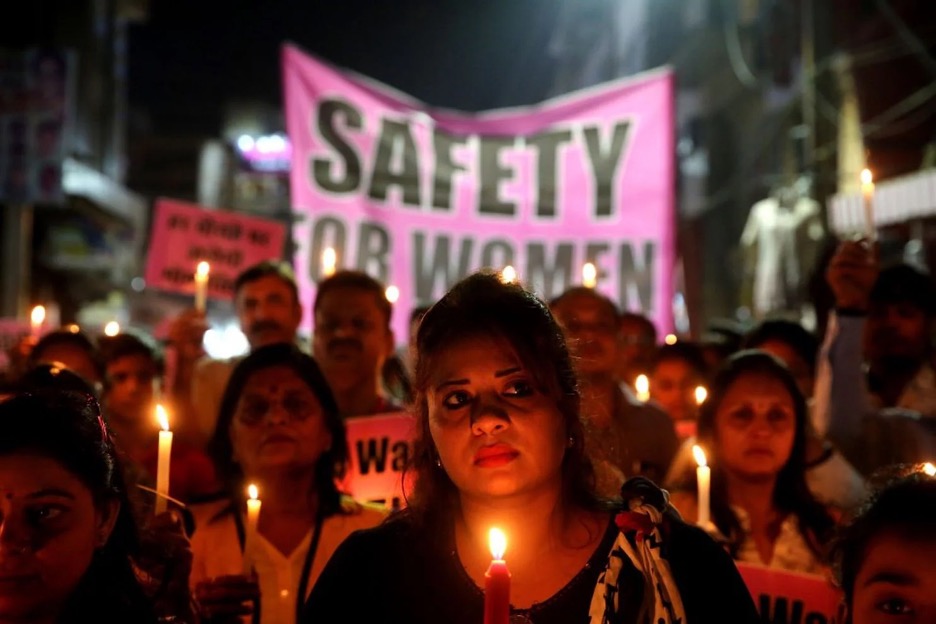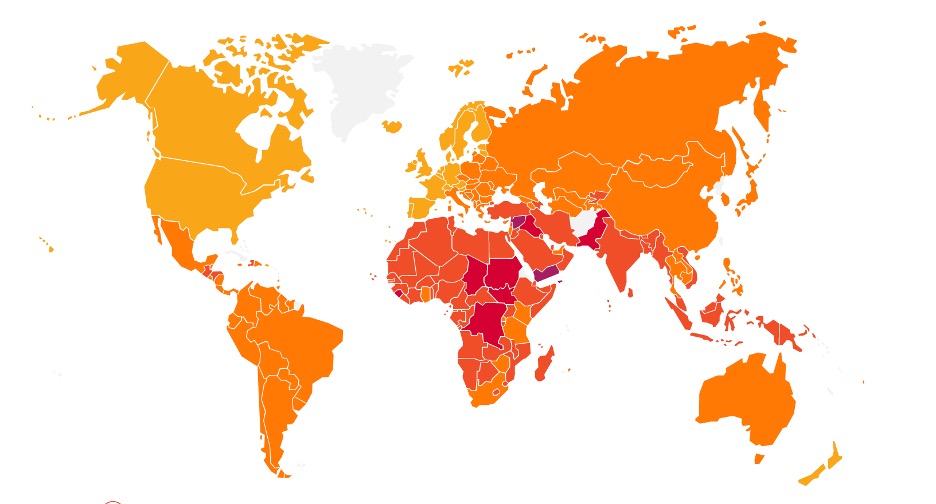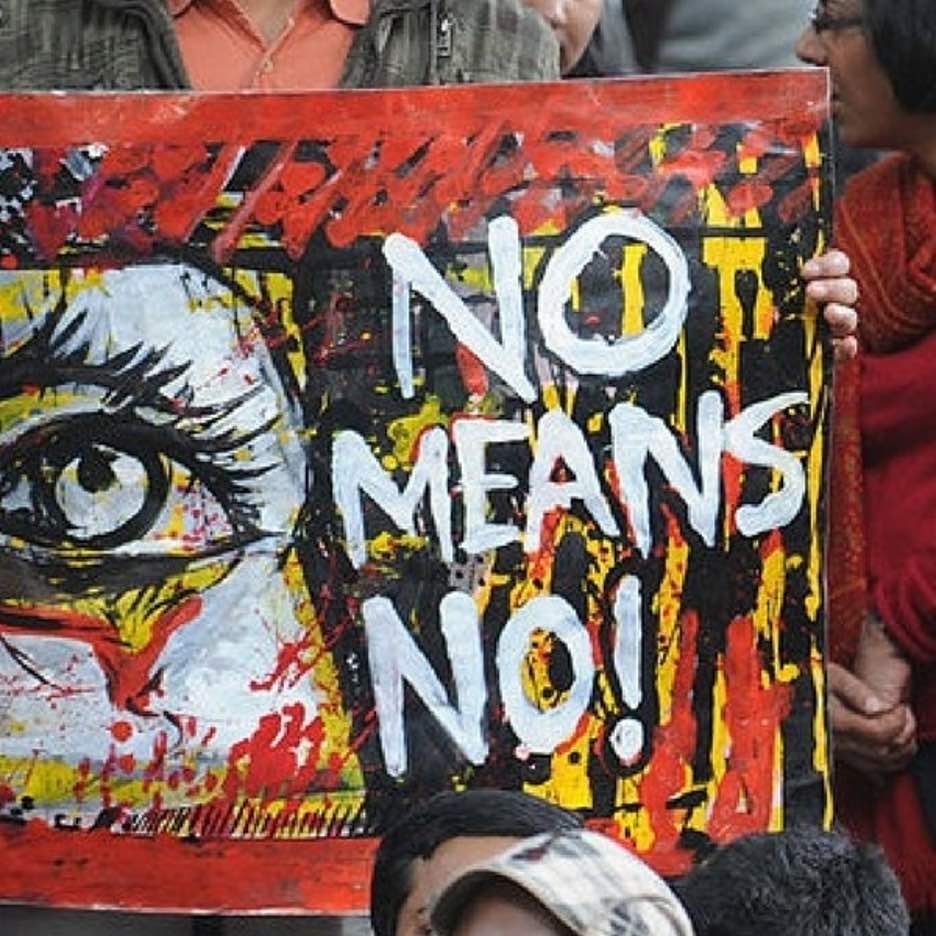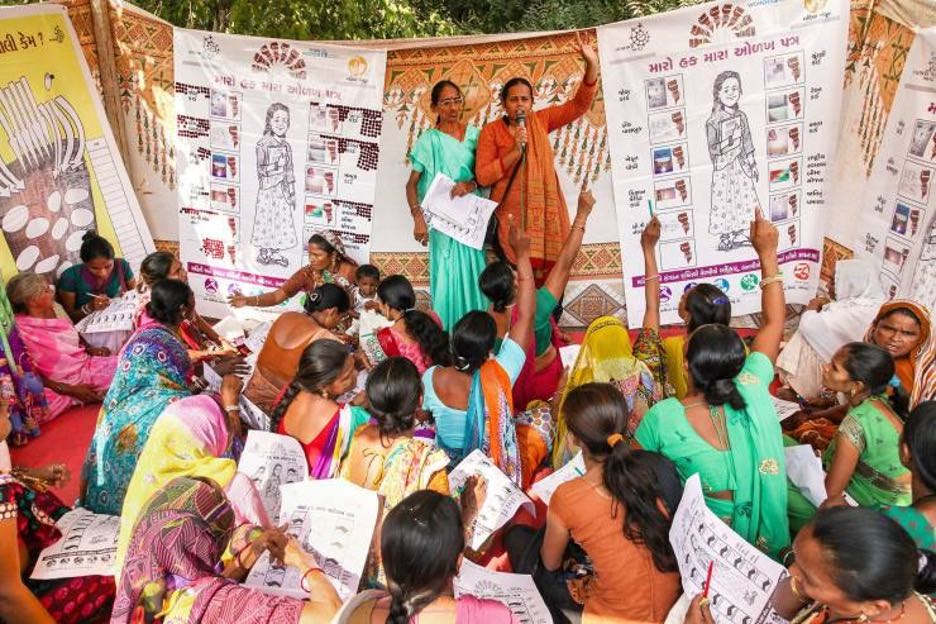She wakes up every morning with fear in her eyes and pain in her body. She knows that today might be the day she is killed, raped, or mutilated by the men who rule her life. She has no rights, no voice, no choice. She is a slave, a commodity, a target. She dreams of a better life, a safer place, a kinder world. She imagines a world where walking down the street is liberating, dreams are pursued without fear, equality is a lived reality, and rights are upheld without discrimination. But she has no hope, no escape, no future. She is a woman, and she is not safe. ‘She’ is one of the millions of women who live in the most dangerous countries, where violence, discrimination, and oppression against women are the norm.
A contrast between the safest and the most dangerous countries for women reveals the stark reality of the global gender gap, which measures the extent of gender-based disparities in various aspects of life. The global gender gap has widened due to the impact of the COVID-19 pandemic, which disproportionately affected women’s health, education, and economic opportunities.

Early Life & Education
Women’s safety is a crucial issue that affects millions of women around the world, especially when they travel or live abroad. However, not all countries offer the same level of security, equality, and respect for women’s rights and well-being. The safety of a country for women depends on various factors, such as the prevalence of violence, the degree of gender equality, the legal protection, and the perception of women’s security. Some countries have made significant progress in these areas, while others still lag behind.
Based on these criteria, some of the sources that rank the safest countries for women are:
The Women, Peace, and Security (WPS) Index is a global measure of women’s inclusion, access to justice, and overall security. Launched in 2017, it assesses women’s status in 170 countries using three dimensions: inclusion, justice, and security. Each dimension includes four indicators capturing women’s well-being, such as education, health, income, political representation, legal rights, discrimination, violence, and safety. The index assigns a score and rank to each country based on the average of the 12 indicators. It aims to identify areas where resources and accountability are most needed to advance women’s status, highlight gaps and achievements, and inspire action among policymakers, researchers, and advocates. The 2023 edition covers 177 countries and reveals wide disparities across countries, regions, and indicators. Norway is the highest-ranked country, followed by Finland, Iceland, Denmark, and Luxembourg. Yemen is the lowest-ranked country.

The Global Gender Gap report, published annually by the World Economic Forum, measures gender-based gaps in economic participation, educational attainment, health and survival, and political empowerment. The report assigns scores and rankings to countries based on the average of these dimensions, with 0 representing the lowest and 1 representing the highest. The latest edition, published in June 2023, covers 156 countries and reveals a 36% widened global gender gap due to the COVID-19 pandemic, which disproportionately affected women’s health, education, and economic opportunities. The report estimates that it will take 135.6 years to close the global gender gap at the current pace, compared to 99.5 years in the previous edition. The top five countries with the smallest gender gaps are Iceland, Norway, Finland, New Zealand, and Sweden, while the bottom five (Yemen, Iraq, Syria, Pakistan, and Afghanistan) have the largest gaps.
The Global Peace Index (GPI) is a report by the Institute for Economics and Peace (IEP) that ranks 163 independent states and territories based on their levels of peacefulness. The GPI uses 23 indicators to assess militarization, societal safety and security, and ongoing conflict. It assigns scores to countries based on factors such as military expenditure, weapons imports and exports, homicide rates, political terror, terrorism, refugees, and deaths from internal and external conflicts. The GPI aims to provide a transparent framework for assessing peace progress and challenges, inspiring action and collaboration among stakeholders. The latest edition of the GPI, published in June 2023, revealed a 0.07 per cent deterioration in global peace in the past year, marking the ninth deterioration in the last 13 years. The report also identified key drivers and trends of peace, such as the COVID-19 pandemic, climate change, civil unrest, and cyberattacks. The top five most peaceful countries in 2023 are Iceland, New Zealand, Denmark, Portugal, and Slovenia, while the bottom five least peaceful countries are Afghanistan, Yemen, Syria, South Sudan, and Iraq.
Safe havens - the safest countries for women
Norway is a highly progressive country for women, with high scores on the Women, Peace, and Security (WPS) Index and the Global Gender Gap report. It has ratified the UN Convention on the Elimination of All Forms of Discrimination against Women and the Council of Europe Convention on Preventing and Combating Violence against Women and Domestic Violence, otherwise known as the Istanbul Convention. Key factors contributing to Norway’s success in promoting gender equality and protecting women from violence include strong laws and policies that uphold women’s rights, high levels of women’s participation and representation in politics, education, and the labor market, well-established networks of general and specialist services for victims of violence, and positive cultural norms and values that respect women’s dignity and autonomy. However, Norway still faces issues such as gender pay gap, sexual harassment, online violence, and increased vulnerability of certain groups of women, such as immigrants, refugees, and minorities.
Finland, which ranks third on the WPS Index and fourth on the Global Gender Gap report, has a consent-based definition of the criminal offence of rape, which aligns with the Istanbul Convention standards. Finland has a long history of women’s suffrage and political activism, and has achieved a high proportion of women in parliament, government, and local councils. They also have a coordinated response system that involves various actors, such as the police, the judiciary, the health sector, and civil society, to prevent and combat violence against women.

Iceland, which tops the Global Gender Gap report and ranks fourth on the WPS Index, has the highest proportion of women in parliament, the smallest gender pay gap, and a progressive legal framework for women’s rights. They also have a high rate of women’s education, employment, and income, and has implemented measures such as parental leave, childcare, and quotas to ensure women’s equal opportunities and access to resources and services.
Denmark, which ranks fifth on the WPS Index and sixth on the Global Gender Gap report, has a high degree of women’s autonomy, financial inclusion, and health outcomes, as well as a low incidence of intimate partner violence.
Luxembourg, which ranks sixth on the WPS Index and 12th on the Global Peace Index, has a high level of women’s education, employment, and cellphone use, as well as a low level of organized violence.
In the Asia-Pacific region, Singapore and New Zealand are considered the safest nations for women. These countries have a low crime rate, a high police presence, and strict laws and regulations that deter and punish violence, harassment, and discrimination against women. Human rights and democracy are also treasured in both the nations. Canada, Costa Rica and Chile are considered safe for women in the North America, Central America and Latin America respectively.
A safe country for women is characterized by strong laws and policies that protect women from violence, harassment, and abuse, ensuring equal access to education, health, employment, and justice; women’s high participation and representation in politics, education, and the labor market reflect their empowerment and autonomy; a well-established network of services for victims of violence provides support and assistance; positive cultural norms and values respect women’s dignity and autonomy, challenging traditional gender roles and stereotypes, promoting gender equality, human rights, and democracy.
Why developing nations consistently rank lower in safety indexes?
Colonialism introduced patriarchal norms, disrupted traditional Asian and African gender roles, and criminalized indigenous practices. It also imposed a rigid binary system of gender, exploiting women’s labor and resources. These factors contributed to the wide disparities between the developing and developed countries.
Developing countries are significantly behind in gender parity, with weaker laws and policies that fail to protect women from violence, discrimination, and oppression. In developing nations like India and Brazil, despite having stringent crime laws, implementation remains a concern, impacting women’s safety. Women face barriers to access legal aid and justice, and lower levels of participation in politics, education, and the labor market. Education and economic empowerment often correlate with women’s safety. Countries with higher literacy rates and employment opportunities for women, such as Canada and Australia, tend to exhibit lower levels of gender-based violence. In contrast, countries facing economic challenges and limited educational opportunities for women, like parts of Sub-Saharan Africa, may struggle to provide a secure environment for women.
Women also face challenges like child marriage, dowry, and honor killings. These countries often fail to provide support and protection to women who experience violence, leaving them vulnerable and stigmatized. Countries like New Zealand and Switzerland actively implement policies to protect women, ensuring swift legal action against perpetrators. In contrast, countries like Afghanistan and the Democratic Republic of Congo face challenges in establishing effective governmental structures to address women’s safety due to political instability and conflicts.

Countries with significant gender disparities, such as Afghanistan and Saudi Arabia, face greater challenges in ensuring women’s safety, as societal norms may condone or perpetuate violence against women. Cultural attitudes play a crucial role in shaping the safety of women. Japan, for instance, maintains a low crime rate partly due to its cultural values emphasizing respect and discipline. However, certain cultural aspects, such as the prevalence of honor killings in some Middle Eastern countries, contribute to an unsafe environment for women.
Additionally, some countries have negative cultural norms that disrespect women’s dignity and autonomy, reinforcing traditional gender roles and stereotypes, perpetuating gender inequality, human rights violations, and authoritarianism.
The lack of reliable and updated data on gender-related indicators, such as violence, health, education, and political participation is also an important factor in developing countries ranking lower. This may lead to underestimation or omission of the actual situation of women and girls in developing countries.
Conclusion
The safety of women is a global concern, affecting millions of women, particularly those living abroad. Not all countries provide equal security, equality, and respect for women’s rights. Factors influencing women’s safety include violence levels, gender equality, legal protection, and perception of security. Based on these criteria, some of the safest countries for women are Norway, Finland, Iceland, Denmark, and Luxembourg, according to the Women, Peace, and Security (WPS) Index; Iceland, Norway, Finland, New Zealand, and Sweden, according to the Global Gender Gap report; and Iceland, New Zealand, Denmark, Portugal, and Slovenia, according to the Global Peace Index. These countries have achieved high scores by implementing strong laws and policies, ensuring women’s participation, providing well-established support networks, and fostering positive cultural norms that respect women’s dignity and autonomy.
However, these rankings are not definitive, and other factors may influence women’s safety in different contexts. The safety of women is not only a personal concern but also a global concern, impacting the development and peace of the world. By learning from the best practices of safest countries, we can create a more secure, equal, and respectful world for all.
Written by – Kashvi
Edited by – Rucha Naik
